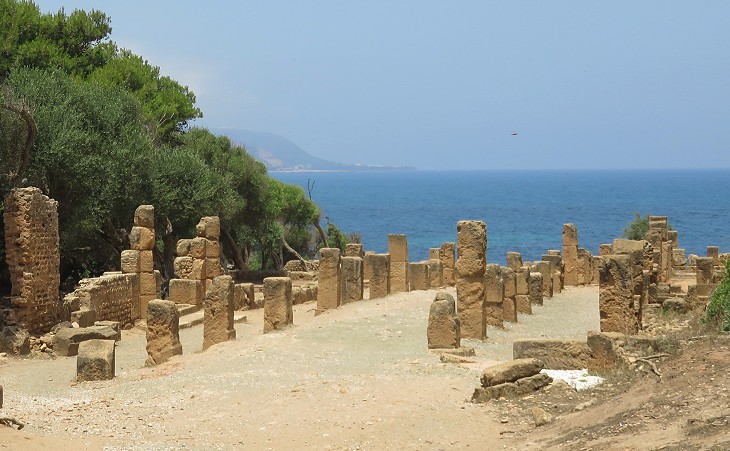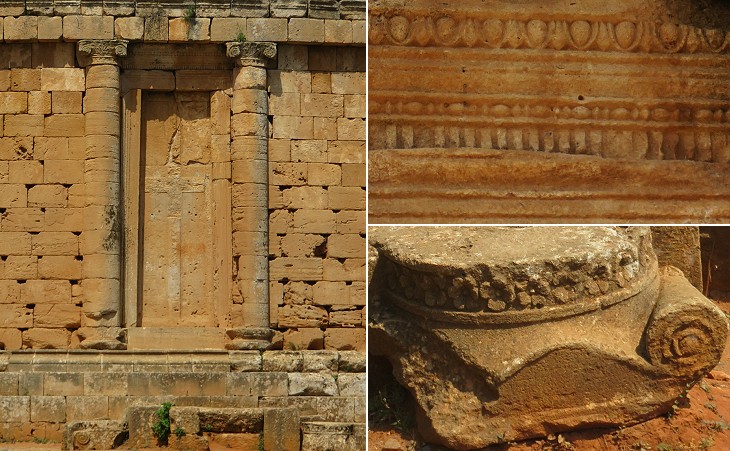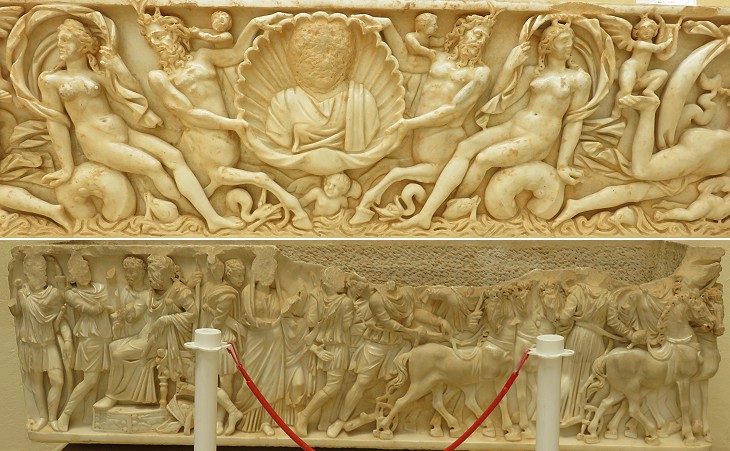ទីប៉ាសា (Tipasa) គឺជាតំបន់ជួញដូរពាណិជ្ជកម្ម និងជាតំបន់វប្បធម៌ដ៏សំខាន់មួយនៅសម័យកាល Punic បុរាណ (ស.វ.ទី ៦មុនគ.ស. រហូតដល់ស.វ.ទី៦នៃគ.ស.) ដែលស្ថិតនៅក្នុងតំបន់មហាសមុទ្រមីឌីទែរ៉ាណេ បច្ចុប្បន្នស្ថិតនៅក្នុងប្រទេសអាល់ហ្សេរី (Algeria)។ តំបន់នេះមានចម្ងាយ៧០គីឡូ ខាងលិចពីទីក្រុង Algiers នៃប្រទេសអាល់ហ្សេរី។

ប្រភព៖ Unesco
ទីប៉ាសា គឺជាតំបន់ស្ថានីយបុរាណវិទ្យាដ៏សំខាន់នៅក្នុងតំបន់ Maghreb ដែលស្គាល់ថាផ្នែកមួយនៃអាហ្រ្វិកខាងលិច បច្ចុប្បន្នរួមមានប្រទេស អាល់ហ្សេរី លីប៊ី មូរ៉ាកូ និងទុយនេស៊ីជាដើម។ នៅតំបន់ទីប៉ាសានេះ មានទីតាំងស្ថានីយសំខាន់ចំនួន៣ គឺពីរជាសំណង់ ទីក្រុងនិងសំណង់ស្ថាបត្យកម្មសំខាន់ៗ និងមួយទៀតជាតំបន់នៃផ្នូរស្តេច ដែលហៅថា Royal Mauritanian Mausoleum។

ប្រភព៖ Unesco

តំបន់នេះគឺជាផ្នែកដ៏សំខាន់នៃការទំនាក់ទំនងរវាងអរិយធម៌ផ្សេងៗរួមមាន ផូនិច (Punic) រ៉ូមាំង (Roman) និងកាតាស (Carthage)ជាដើម។ នៅក្នុងអំឡុងសម័យកាលនោះ ទីប៉ាសា បានដើរតួយ៉ាងសំខាន់ ដែលជាកំពង់ផែពាណិជ្ជកម្មផ្លាស់ប្តូរទំនិញជាមួយនឹងតំបន់ផ្សេងៗទៀតផង និងជាមជ្ឃមណ្ឌលសាសនាផងដែរ។ យោងតាមសិលាចារឹកដំបូងបង្អស់នៅក្នុងទីប៉ាសាមានកាលបរិច្ឆេទឆ្នាំ២៣៨នៃគ.ស. ហើយដែលបានបង្ហាញអំពីការសាងសង់សំណង់អាគារសាសនាមួយចំនួនធំដែលចាប់ពីសតវត្សទី៣ និងទី៤នៃគ.ស. ដោយស្ថិតនៅក្នុងសម័យកាលរ៉ូមាំង។ សំណង់ស្ថាបត្យកម្មជាច្រើនត្រូវបានសាងសង់ឡើងនៅក្នុងតំបន់ទីប៉ាសា រួមមានសំណង់ផ្នូរ Royal Mauritanian Mausoleum កសាងនៅស.វ.ទី៣ មុនគ.ស. អំឡុងពេលស្ថិតនៅក្នុងរជ្ជកាលស្តេច Juba II និងសំណង់សំខាន់ជាច្រើនទៀត។ សំណង់ស្ថាបត្យកម្មទាំងនោះមានភាគច្រើនកសាងអំពីថ្ម និងឥដ្ឋ ដែលមានការតុបតែងដោយ Mosaic ជាដើម។ ឧទាហរណ៌ សំណង់ផ្នូរ Royal Mauritanian Mausoleum គឺកសាងអំពីថ្ម ដាក់ពីលើគ្នា មានរាងមូលខ្ពស់ ដោយមានចម្លាក់ជាសិល្បៈសសររ៉ូមាំងជាច្រើននៅជុំវិញ។

នៅឆ្នាំ៤៣០នៃគ.ស. តំបន់នេះមានការឈ្លានពានពីសំណាក់ពួក វ៉ាន់ដាល់ ដែលបានវាយលុកក្នុងតំបន់ Maghreb និងបានគ្រប់គ្រងនៅតំបន់ទីប៉ាសា។ វ៉ាន់ដាល់ គឺជាក្រុមជនជាតិអាឡឺម៉ង់ដែលកកើតឡើងនៅស.វ.ទី១នៃគ.ស. និងបានបន្តរីកចម្រើនរហូតដល់ក្លាយជារដ្ឋមួយដែលអាចឈ្លានពានតំបន់ជាច្រើន ក្នុងនោះក៏មានតំបន់ទីប៉ាសាពីសំណាក់អាណាចក្ររ៉ូមាំងដែរ។ នៅឆ្នាំ៥៣១នៃគ.ស មានអាណាចក្រថ្មីមួយទៀត ដែលមានឈ្មោះប៊ីហ្សង់ទិន ក៏បានវាយលុក និងគ្រប់គ្រងតំបន់ទីប៉ាសានេះបន្ត។
សរុបមកទីប៉ាសា គឺជាតំបន់មជ្ឍមណ្ឌលពាណិជ្ជកម្ម និងជាតំបន់វប្បធម៌ដ៏សំខាន់នៅក្នុងតំបន់អាហ្រ្វិកខាងលិច ដែលបានបង្ហាញតាមរយៈសំណង់ស្ថាបត្យកម្ម និងសិលាចារឹកនៅទីនោះ។ ប្រវត្តិសាស្រ្តនៅក្នុងតំបន់នេះ គឺបានបង្ហាញអំពីការគ្រប់គ្រងដោយអាណាចក្រជាច្រើនជាបន្តបន្ទាប់ដូចជា រ៉ូមាំង នៅស.វ.ទី៣ វ៉ាន់ដាល់ ស.វ.ទី៥ និងប៊ីហ្សង់ទិន នៅស.វ.ទី៦។ នៅឆ្នាំ១៨៥៧ តំបន់ទីប៉ាសា ត្រូវបានបង្កើតជាទីក្រុងថ្មីមួយ ដែលមានប្រជាជនរស់នៅច្រើន និងបន្តជាតំបន់ពាណិជ្ជកម្មរហូតមកដល់សព្វថ្ងៃនេះ។ ស្ថានីយបុរាណនេះ ក៏ត្រូវបានចូលបញ្ជីបេតិកភណ្ឌពិភពលោកក្នុងឆ្នាំ១៩៨២ ក្នុងទំហំប្រមាណជាង៥២ហិតា៕
———————————
Tipasa Culture
Tipasa was an important trading and cultural area during the Punic period (6th century BC to 6th century CE) located in the Mediterranean, now in Algeria. The area is 70 km west of Algiers city of Algeria.
Tipasa is an important archeological site in the Maghreb, known as part of West Africa today including Algeria, Libya, Morocco, and Tunisia. In the Tipasa region, there are three main sites, two of which are major urban and architectural structures and the other is the area of the royal tomb called the Royal Mauritanian Mausoleum.
This area is an important part of the relationship between various civilizations, including the Punic, Roman, and Carthage. During that period, Tipasa was playing an important role as a trading port with other regions and as a religious center. According to the first inscription in Tipasa, the date is 238 . And shows the construction of a large number of religious buildings from the 3rd and 4th centuries AD in the Roman period. Many architectural structures were erected in Tipasa, including the Royal Mauritanian Mausoleum built in the 3rd century BC during the reign of King Juba II and many other important structures. Most of these structures are made of stone and brick and decorated with Mosaic. For example, the Tomb structure of the Royal Mauritanian Mausoleum is built of stones stacked on top of each other, with a high round shape, with many art Roman pillars around it.
In 430 CE, the area was invaded by the Vandals, who invaded the Maghreb and took control of Tipasa. Vandals are a group of Germans that originated in the 1st century CE and continued to grow into a state that could invade many areas, including Tipasa from the Roman Empire. In 531 CE, a new empire called Byzantine continued to invade and control Tipasa. In conclusion, Tipasa is a major commercial and cultural center in West Africa, as evidenced by its architecture and inscriptions. The history of this region shows the succession of several empires, such as the Romans in the 3rd century CE, Vandal in the 5th century, and Byzantine in the 6th century. In 1857, Tipasa was established as a new city with a large population and continues to be a commercial area until today. This ancient site was also designated in the World Heritage List in 1982, covering more than 52 hectares.
អត្ថបទដោយ៖ លោក អេង តុលា






